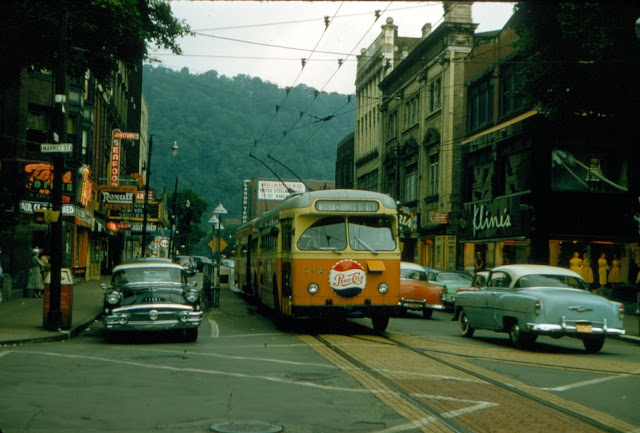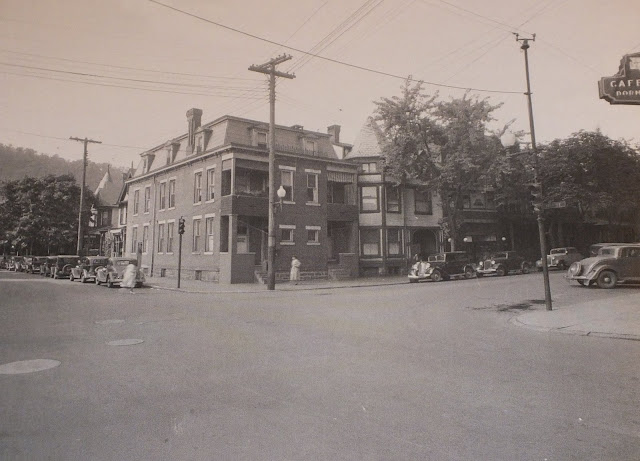At the turn of the 20th Century - Johnstown's leading outdoor recreation center was the old Westmont grounds, comprising football and baseball fields and a harness racing track.
This rare look at the track shows the home stretch. The small building in the center is the judges' stand. Directly opposite is the grandstand and in the back is the old bandstand.
The 28 acre property was bordered by what is now Tioga Street, Wayne Street and Dartmouth Avenue. Westmont Presbyterian Church stands on what was the approximate center of the track.
The Johnstown Driving Park Assocation was organized in 1893 to construct the half-mile oval on the Westmont property.
Work on the track began in June 1893. As construction continued, the driving association considered the idea of putting the road that led from Whiskey Springs (Franklin Street) to Westmont in first-class condition. A newspaper item at the time said "the road has an easy grade and it is estimated that it can be made an excellent driveway with an outlay of about $1,000 ($ 24,645 in today's dollars).
Another and much shorter route to the park, although with a very steep grade, will be put through the lands of A.J. Haws and the Cambria Iron Company. These roads, together with the Incline will afford ample ways by which the grounds may be reached." Now you know where the name "Easy Grade" comes from and when Millcreek Road was put in.
Less than two weeks after the awarding of the contract, the association ran into some mild opposition. The Roxbury Driving Park Association asked the Westmont group to reconsider their purchase and join them in the Roxbury (Luna Park) deal.
The proposal was flatly rejected and work continued on schedule on the hilltop land. The half-mile track was 60 feet wide and completely enclosed by a wooden railing. The grandstand had seating for 2,500 - it also contained a large dining room for the general public.
Fifty stables housed the horses. In front of each stable was a fire hydrant.
Johnstown at that time had more than 100 racing horses, some of the prominent owners being A.J. Haws, M.B. Young, Samuel Lenhart, Joseph Love, Dan Olmstead, C.J. Burggraf, J.C. Pender and Eugene Zimmerman.
The official opening of the track began with a three day meet September 20,21 and 22, 1893.
Also on the opening bill - chariot races, hurdle races and people parachuting out of hot air balloons. Admission was 50 cents ($12.32).
Four days before the official opening of the park - over 1,500 people gathered at the park for a series of bicycle races sponsored by the Johnstown Cycle Club. The German Band provided music between races.
Johnstown High School played some of its earliest football games on the Westmont field even before the park was constructed. In November, 1900, the Trojans played Altoona there and scored a 12-5 victory. They also defeated Derry 17-0 there on October 12, 1901 and the team continued to play occasional contests on the hilltop field until October of 1904, when it transferred its games to field area of The Point.
When the field was used for football, the competing teams usually were taken by wagon up the Incline. Pedestrians used a patch which led up the hillside from behind old Johnstown High - now the site of the current MRI building - since it was a much shorter route than using the "Big Road" - Millcreek Road.
Surrounding much of the park was the Johnstown Country Club golf course, forerunner to Sunnehanna. In later years the course was disbanded and another course was built at Sunnehanna.
Much of the city's baseball was played at the Westmont Park. The Johnstown Athletics were in prominence at that time.
The life of the park was short-lived though, as the Cambria Iron Company, owner of the property started selling it as lots in 1907.























































